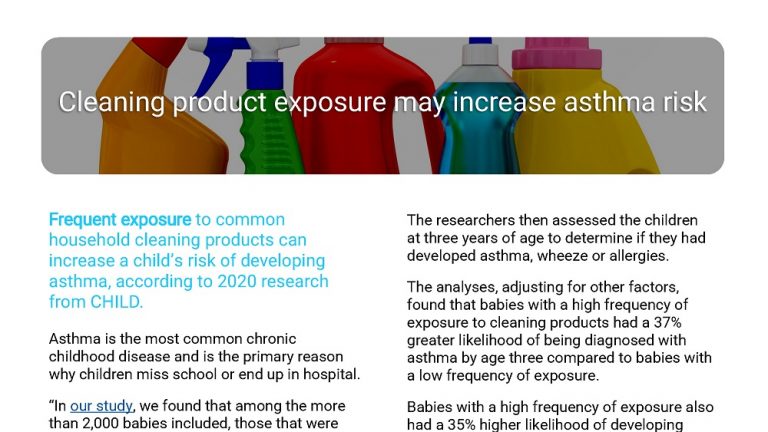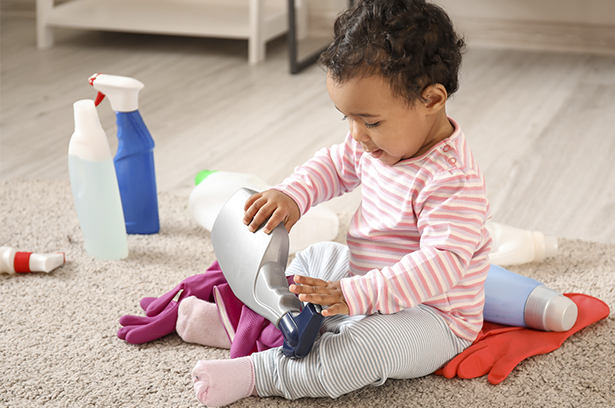Cleaning product exposure may increase asthma risk
Frequent exposure to common household cleaning products can increase a child’s risk of developing asthma, according to 2020 research from CHILD.
Asthma is the most common chronic childhood disease and is the primary reason why children miss school or end up in hospital.
“In our study, we found that among the more than 2,000 babies included, those that were more frequently exposed to cleaning products in their first few months of life had a significantly higher risk for asthma and other breathing problems by age three,” says Dr. Tim Takaro (Simon Fraser University), senior author of the study.
“There is evidence linking cleaning product exposure to asthma in adults, but we believe ours is the first study to look at exposure among infants.”
Some of the prime culprits, he says, were air fresheners, plug-in deodorizers, dusting sprays, and oven cleaners.
When infants participating in CHILD were a few months old, their parents completed questionnaires about the family’s daily, weekly and monthly use of dozens of household cleaning products. CHILD research teams also visited the families’ homes to perform environmental assessments and analyze the babies’ exposure to dust, mould, and furry pets, as well as chemicals and cleaning products.
The researchers then assessed the children at three years of age to determine if they had developed asthma, wheeze or allergies.
The analyses, adjusting for other factors, found that babies with a high frequency of exposure to cleaning products had a 37% greater likelihood of being diagnosed with asthma by age three compared to babies with a low frequency of exposure.
Babies with a high frequency of exposure also had a 35% higher likelihood of developing recurrent wheezing by the same age, and a 49% greater likelihood of having both recurrent wheeze and sensitization to at least one allergen – a combination of conditions that increases the likelihood of an asthma diagnosis in later childhood.
“We found that sprayed, fragranced, and disinfecting products carried the greatest potential for harm when used at a higher frequency,” says first author Jaclyn Parks, M.Sc. (Simon Fraser University). The researchers believe that chemicals in these products can trigger the inflammatory pathways of the innate immune system, and in turn, damage the lining of the respiratory tract, which can lead to asthma and wheeze.
An unexpected finding was that exposure to cleaners impacted girls more than boys. “We’re not certain why this is but there may be some differences in immune system tuning between the genders. This question calls for more research,” says Park.
The Canadian Medical Association Journal (CMAJ) published the study in February 2020 and the researchers received over 300 requests for interviews within a few days of publication.
COVID CONSIDERATIONS
In March 2020, Dr. Takaro and Parks published a follow-up letter in CMAJ in which they acknowledged that the COVID-19 crisis “warrants the use of disinfectants at an increased frequency.”
“We remind parents that disinfectants can be used in an appropriate context and applied in a responsible manner,” they wrote, while also championing physical distancing and other measures to reduce exposure, along with frequent hand washing with soap and water and wearing masks.





